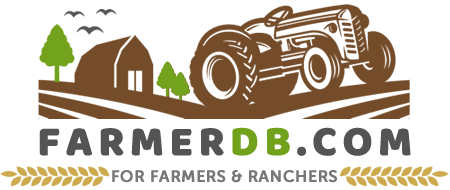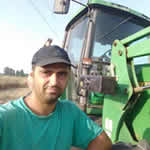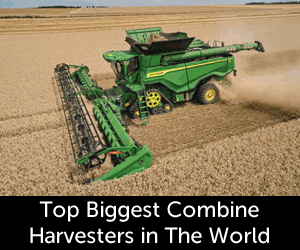Romagnola cattle are a domestic, beef-producing breed and one of the largest cattle breeds.
This breed originates from Italy, specifically the Romagna region in the northern part of the country.
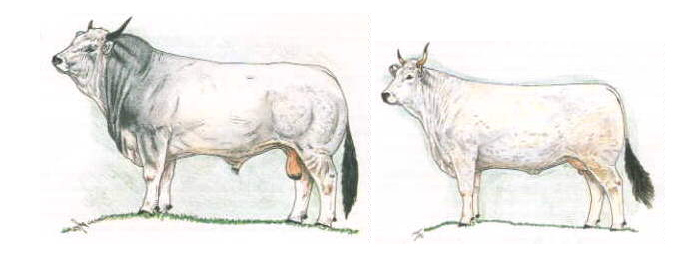
Their history goes back many centuries, and they are thought to have descended from ancient cattle brought to Italy by barbarian tribes around 2,000 years ago. For a long time, Romagnola cattle were also used as draft animals, helping farmers with tasks like pulling plows and carts.
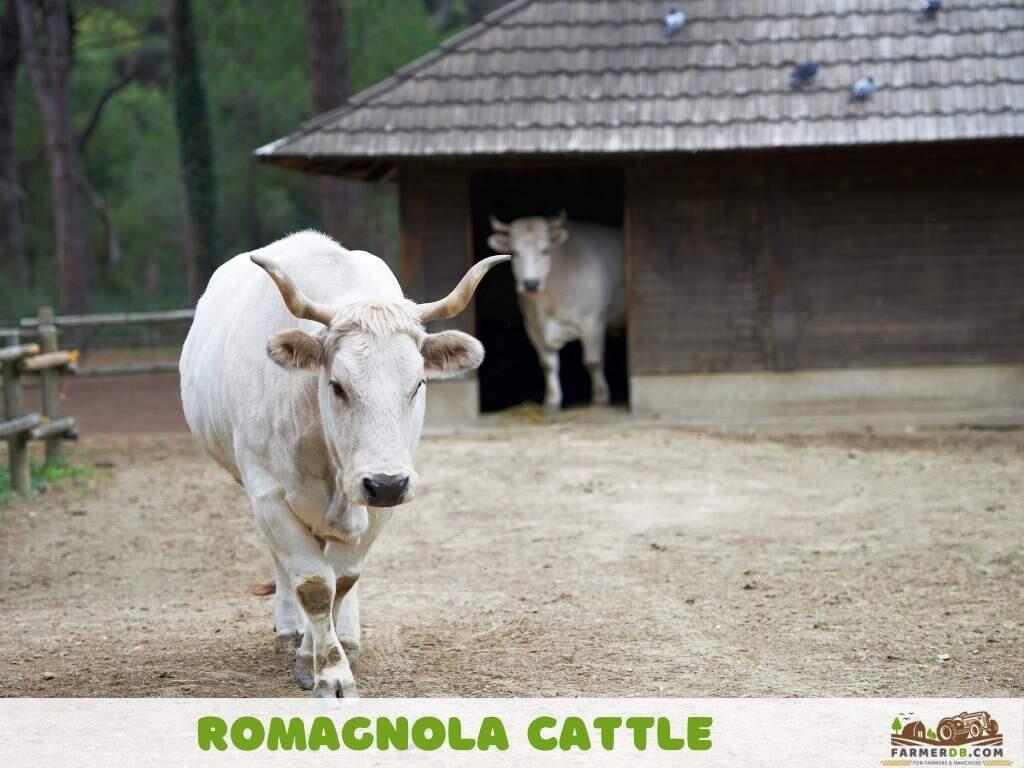
Today, they are especially popular in Italy, where they are valued for their high-quality meat. They are also well-known in other parts of the world, including the United States (see refs.) , South America, and Australia.
Although these cattle are not as numerous as some other breeds, they are neither at risk nor considered endangered.
Contents
Characteristics
Colors
The coat is white with shades of grey, especially around the eyes, neck, thighs, and ears.
Their pigmentation is black in specific areas such as the mouth, vulva, anal area, hooves, and the tips of the horns.
Calves are born with a wheat-colored coat, which turns white by the time they are three months old. In winter, the coat becomes thicker and darker, while in summer, it is shorter and lighter. This seasonal change helps the breed adapt to varying climates.
Skin
The skin is thin, elastic, and easy to lift.
Head
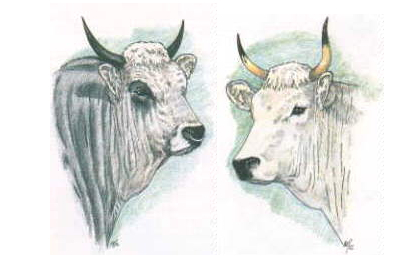
The head is light and well-proportioned, with a straight profile and a broad, flat forehead. The eyes are lively and almond-shaped, while the muzzle is wide, and the ears are large, mobile, and set horizontally. The dewlap is minimal and lightly developed around the neck.
Horns
Romagnola cattle are a horned breed.
The size and shape of the horns can vary, but they are usually curved and proportionate to the size of the head.
Horns are a distinguishing feature of the breed, although in some cases, they may be removed for safety or management purposes.
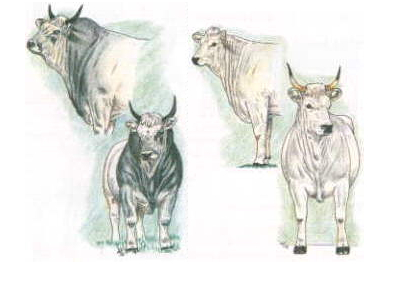
Neck
In males, the neck is rounded and muscular, with folds of skin, while in females, it is less pronounced but still strong and well-shaped.
Shoulders
The shoulders are broad, muscular, and well-aligned with the back. This area shows strong muscle development and proper angling to connect seamlessly with the forelegs.
Back and Loins
The back is straight, long, and broad, with heavy muscle development.
The loins are thick, muscular, and slightly inclined in males.
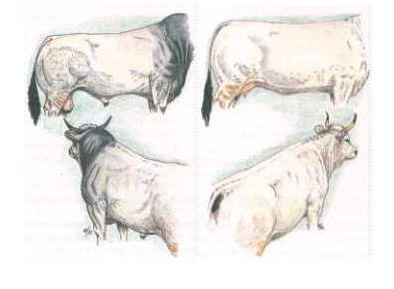
Chest and Thorax
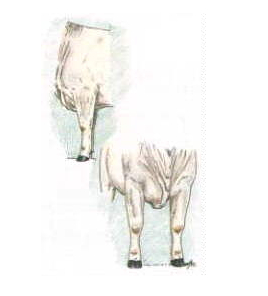
The chest is broad and muscular, while the thorax is deep and wide with well-arched ribs. This design ensures strong respiratory and circulatory systems.
Abdomen and Flanks
The abdomen is broad and well-supported, with a nearly straight underline. The flanks are full and well-connected to adjacent body parts.
Rump and Tail
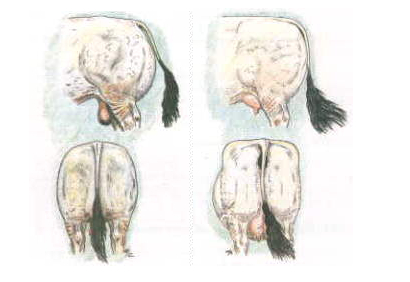
The rump is long and wide, covered with thick muscle. It is horizontal or slightly inclined toward the back, and the sacral vertebrae are barely visible. The tail is slender and reaches the hocks.
Thighs and Buttocks
The thighs are deep, wide, and muscular, while the buttocks are thick and prominently convex. Both areas show compact and well-defined muscle development.
Legs and Feet
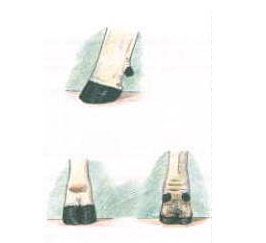
The legs are strong, lean, and well-angled, with sharp, sturdy joints. The hooves are compact and durable, with high heels and dark pigmentation.
Udder and Testicles
The udder is broad and evenly divided into quarters, with a spongy texture and teats that are well-positioned for nursing calves.
Male testicles are well-proportioned and properly developed within the scrotum.
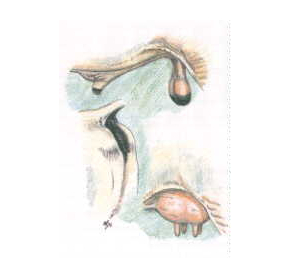
Size
Romagnola cattle are large-sized.
The height of mature females usually ranges between 55 to 57 inches (139 and 144 cm). Males can grow significantly larger, with heights ranging from 61 to 62 inches (155 to 158 cm).
Lifespan
Romagnola cattle are a relatively long-lived breed, with a lifespan ranging from 15 to 20 years, similar to the Chianina cattle
The productive lifespan of cattle intensively used for breeding is around 8 to 12 years, depending on management practices.
Growth Rate
How fast do they grow?
These cattle have a fast growth rate, with a daily weight gain of approximately 2.4 to 2.9 lbs (1.1 to 1.3 kg) under proper feeding.
This rapid growth enables them to efficiently reach market weight at around 18 to 24 months, enhancing productivity for farmers.
Romagnola cattle are well known for their great feed conversion efficiency.
Weight
The weight of mature Romagnola cattle showcases their large size and strong build.
Male cattle weigh between 2,600 to 2,900 lbs (1,200 to 1,300 kg) at maturity, while females range from 1,400 to 1,500 lbs (650 to 700 kg).
One characteristic of these cattle is their low birth weight, which contributes to easier calving. Female calves are usually born weighing 27 to 29 lbs (12 to 13 kg), while male calves weigh 30 to 33 lbs (14 to 15 kg) at birth.
Calves are weaned at around 6 to 8 months of age, by which time they reach a weight of 500 to 700 lbs (225 to 315 kg).
| 6 Month | 12 Month | 18 Month | 24 Month | |
|---|---|---|---|---|
| Bulls | 280 kg | 500 kg | 650 kg | 830 kg |
| Cows | 230 kg | 380 kg | 490 kg | 580 kg |
Slaughtered Time
At this age, bulls weigh approximately 1,650 to 1,760 lbs (750 to 800 kg), while cows weigh around 1,210 to 1,280 lbs (550 to 580 kg).
The dressing percentage of this breed is approximately 63%, which is considered very high.
This means that an 1,764 lbs (800 kg) cattle would yield approximately 504 kg (1,111 lbs) of meat.
Temperament
They have a calm and gentle temperament, which makes them easy to handle and work with.
They are naturally peaceful animals and rarely show aggression, which is helpful for farmers who need to interact with them often. Even though they are calm, they stay alert and aware of their surroundings, helping them adjust to different environments.
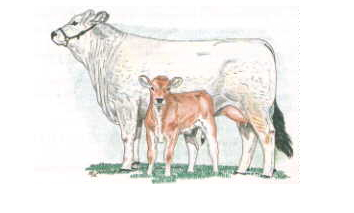
Their calmness and agility come from years of breeding, originally for both work and beef production.
These cattle are also good grazers, making them well-suited for pastures. Their ability to graze efficiently contributes to their adaptability and productivity. This combination of good temperament and grazing ability makes them highly valued on farms and ranches.
Meat
The Romagnola meat is classified as high-quality meat and is highly valued in the market, especially in Italy, where it is considered a luxury product.
It is often favored in high-end restaurants and specialty markets. The tenderness of the meat is exceptional, while the flavor can be described as rich yet milder compared to other types of beef.
The marbling ratio is moderate, offering a good balance of intramuscular fat. It is not as heavily marbled as Angus but slightly more so than Chianina, contributing to its juiciness and appeal. The breed’s large muscle mass provides premium cuts such as sirloin, ribeye, and tenderloin, which are highly prized for their quality.
Many consumers prefer Romagnola beef for its natural quality and the minimal need for intensive feed finishing, making it a particularly appealing choice for those who value both flavor and sustainable production practices.
Raising
Feeding
During the warm season, these cattle can be left to graze on their own. They are grazers and can make good use of natural grasses and forages. They are well-suited to extensive grazing systems, where they can maintain strong growth rates on pasture alone.
In the winter months, or when grazing is not available, silage (such as corn, alfalfa, or grass) and hay are great options for feeding. Thanks to their fast weight gain, it’s not always necessary to include grain in their diet.
Their weight gain is not heavily influenced by the type of feed, and they can grow well even on lower-quality forages or in less-than-ideal conditions.
It’s important to ensure they always have access to minerals, vitamins, and a fresh, clean water source to support their health and growth.
Environment
The ideal environment for these cattle is a pasture-based system, where they can graze freely for extended periods and meet their energy needs naturally.
They can also be raised in commercial or intensive farming systems, provided they are given sufficient space to minimize stress, agitation, and competition for resources such as food and water.
These cattle can also perform well in hilly or mountainous areas. Their strong legs and good grazing ability allow them to make use of steep, rugged terrain.
Climate
They can be raised in a wide variety of climates.
They thrive in temperate climates with moderate conditions, as they originate from a region with warm summers and mild winters.
Their sweat glands allow them to cope well with hot climates, making them capable of handling high temperatures.
In colder environments, their coat thickens during winter to provide insulation against low temperatures, showcasing their adaptability to various conditions.
Shelter
Romagnola cattle are tough and adaptable, so they don’t always need a full shelter, especially in mild weather.
If you’re raising them in a pasture, they’ll usually do fine with some natural shade from trees or a simple windbreak. That said, in extreme weather like heavy rain, snow, or extreme heat, it’s a good idea to have some kind of cover to keep them comfortable.
If you’re in a colder region, a basic shelter can help protect them from harsh winds during winter, even though their thick winter coat does a great job. And for calving, having a clean, dry spot is always a great move.
How many cattle per acre?
For most temperate climates with moderate pasture quality, 3.5 to 4.5 acres per cow is usually sufficient.
However, in areas with lower-quality forage, 5 to 7 acres per cow may be more appropriate.
Each cow can consume 2% to 3% of its body weight in dry matter per day.
Regions with long growing seasons allow pastures to regenerate more quickly, reducing the amount of land needed. In contrast, areas with shorter growing seasons or arid climates often require additional acreage to ensure adequate forage availability.
Breeding
Romagnola cattle can start breeding at around 16 to 18 months for heifers and 18 to 22 months for bulls.
Some farmers prefer to wait longer for heifers to ensure they are fully ready for pregnancy, calving, and caring for calves afterward. The decision depends on your farm’s practices, as well as the health and weight of the animals.
Breeding is commonly done naturally, with bulls placed in herds for mating. Alternatively, artificial insemination (AI) is often used, especially when focusing on crossbreeding or improving genetics.
They do not have fertility problems. They are known for their strong reproductive performance and consistent breeding cycles.
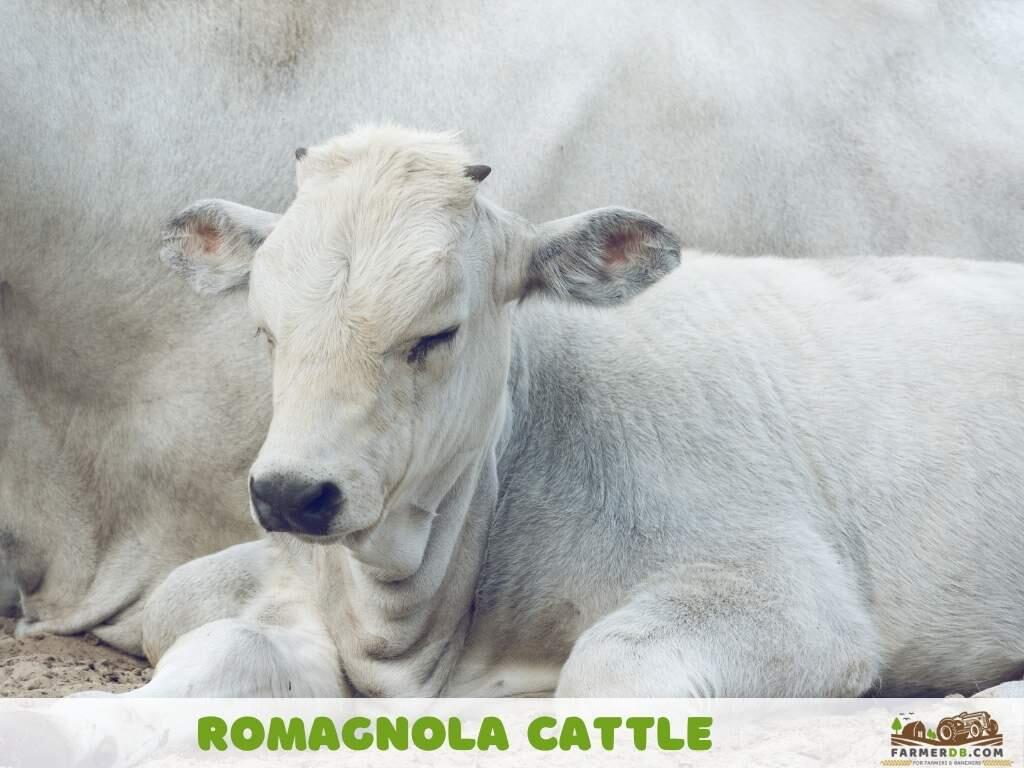
The gestation period is about 280 to 290 days, which is similar to other beef breeds. Calving is generally easy and low-risk, as calves are born with low birth weights, reducing complications during delivery.
The cows are good mothers, with moderate milk production that is usually sufficient to raise healthy calves until weaning, which typically occurs at 6 to 8 months.
Romagnola bulls are highly valued in crossbreeding programs, particularly in F1 systems. They pass on desirable traits such as muscle development, feed efficiency, and calving ease.
- Romagnola x Angus: Improve marbling and beef flavor. Angus adds marbling for richer beef. Romagnola contributes to muscle development and leaner carcasses.
- Romagnola x Hereford: Enhance adaptability and hardiness. Hereford adds good foraging ability and disease resistance. Romagnola contributes great carcass quality and tenderness. The cross is well-suited to extensive grazing systems.
- Romagnola x Charolais: Maximize growth and size. Charolais brings a larger frame size and faster growth. Romagnola ensures lean, high-quality beef with good muscle definition.
- Romagnola x Limousin: Balance leanness and beef tenderness. Limousin contributes to leaner carcasses with fine muscle fibers. Romagnola adds tenderness and improves meat quality.
- Romagnola x Brahman (or other Bos indicus breeds): Adapt to hot, tropical climates. Brahman adds heat tolerance, tick resistance, and endurance. Romagnola enhances muscle development and improves meat quality.
Terminal vs. Maternal
These cattle are primarily considered a terminal breed, valued mainly for their great meat production rather than their maternal traits.
Health Issues
This cattle breed is generally healthy and hardy. They do not have specific health problems related to the breed but, like all cattle, they can sometimes face common issues.
These may include parasites, respiratory problems during sudden weather changes, bloat, or hoof issues. With good care and management, these problems can usually be prevented or treated.
Why should you raise it?
As a homesteader, raising Romagnola cattle purely for personal meat consumption is a good choice. These cattle are gentle and low-maintenance, allowing you to focus on meeting their basic needs, such as providing fresh water, minerals, and pasture, without the stress of intensive care routines.
They are also highly efficient feeders, consuming less compared to many other breeds while achieving impressive muscle growth. Their lean, tender meat is a healthy option for your family, offering lower fat content and high-quality protein.
With minimal input, you can let them graze freely, care for them at your own pace, and enjoy the reward of high-quality beef when it’s time for butchering.
As a business opportunity, Romagnola cattle could be a profitable choice, especially if you’re open to exploring new ventures and enjoy the challenges of running a niche market business.
Their ability to gain muscle with less feed makes them appealing for small-scale beef production. The lean meat may not attract every customer, but it’s highly valued in niche markets that prioritize healthier, lower-fat beef options.
Some of the marketing ideas for Romagnola beef that could be applied are:
- Promote the quality: Emphasize the tenderness, flavor, and natural quality of Romagnola beef, which stands out even with less marbling.
- Highlight health benefits: Lean beef is appealing to health-conscious consumers. Market it as a premium, healthier alternative to heavily marbled beef.
- Local and sustainable: Stress that your cattle are raised naturally on pasture, which appeals to buyers looking for sustainable, local options.
- Farm-to-table: Partner with local restaurants or farmer’s markets to sell directly to customers who value quality and transparency.
- Specialty packaging: Offer pre-packaged cuts for easy sale, or focus on unique products like ground beef or steaks.
Advantages
- High-quality beef
- Great feed conversion efficiency
- Good size and strong constitution
- High fertility
- Good maternal traits
- Valuable in crossbreeding
Disadvantages
- Limited availability: They are not as widespread as other breeds
- Niche market appeal: Their leaner meat may not appeal to consumers who prefer heavily marbled beef.
- Seasonal coat changes require monitoring. It may pose a risk of overheating if not shed properly in warm or humid regions.
References
Do you have any experience with the topic discussed here?
Would you like to improve the information shared and contribute your practical knowledge on the subject?
Your real-world experience as a farmer or rancher could greatly benefit other members, and the community would deeply appreciate your contribution.
